Fire Updates,
M85 Galaxy Supernova 2020nlb
Posted: 30 June 2020
Saturday, 27 June 2020, dawned partly cloudy with very little smoke visible. The fire on the mountain continued to grow, mostly towards the east and southeast due to strong winds from the west, with some evacuations ordered in the threatened areas. As of Saturday morning it had burned 95,225 acres but was 40% contained. The most serious threat was on the east of the mountain, especially with strong winds being forecasted. There was also an increased threat of lightning from monsoon thunderstorms beginning today. Mid-morning there was still a smell of smoke outside but very little smoke was visible towards the mountain or in the sky. Power was restored at Mt Lemmon Observatory allowing their webcam to show live images again. It may still be intermittent depending on fire conditions on the mountain. Saturday afternoon there was an occasional clap of thunder from monsoon storms in the area. There were some buildups over the mountain as seen in this webcam image (1620 MST) looking to the south.
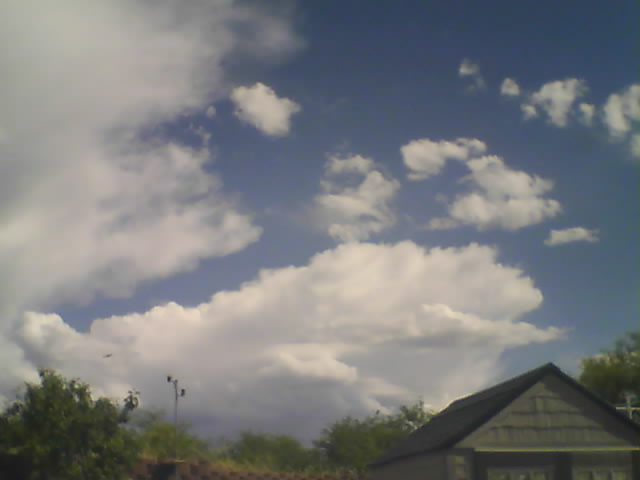
Although smoke here was not an issue and the smell was gone late afternoon, I did not open the observatory Saturday night due to the clouds and wind. The evening fire report said there had been some light rain (0.1") in the fire area in the afternoon and the fire was 45% contained. Strong winds were forecast to occur on Sunday, with the strongest winds of the year expected on Monday. Fortunately, the threat to Oracle has been significantly reduced.
Sunday, 28 June, dawned clear with no smoke visible. The fire had burned 104,690 acres with 45% containment. Thin wispy smoke began appearing in the sky mid-morning as the winds increased. Some clouds appeared in the afternoon, but very little smoke was visible as the strong winds from the west pushed the fire and smoke to the east instead of the north. Some smoke from the fire on the east side of the mountain was visible late afternoon.
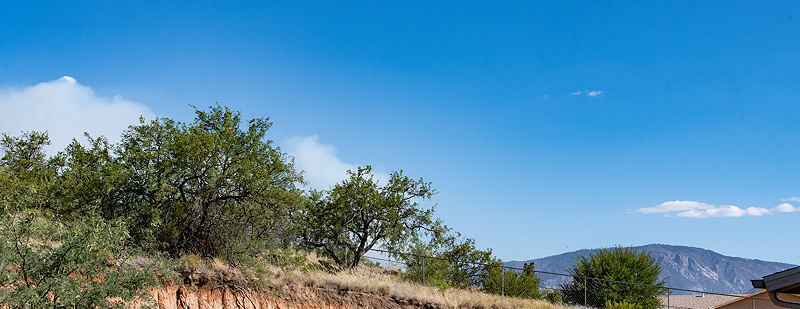
Due to the wind and clouds I did not open the observatory Sunday night.
Monday, 29 June, dawned mostly clear and still windy, with no smoke visible. The Bighorn Fire was at 107,099 acres, 45% contained, with no structures burned since it was started on 5 June by lightning. The forecast for Monday called for the strongest winds in YEARS on Mt Lemmon. Due to the strong winds I did not open the observatory Monday night.
Tuesday, 30 June, dawned mostly clear, calm, with no smoke visible. The fire had burned 114,991 acres and was still 45% contained. As predicted, 29 June had the strongest wind ever recorded on Mt Lemmon for the date. This fire map shows the burned areas (purple), and the evacuation statuses (red = GO, yellow = SET, green = READY). Oracle and Oracle State Park are at the top.
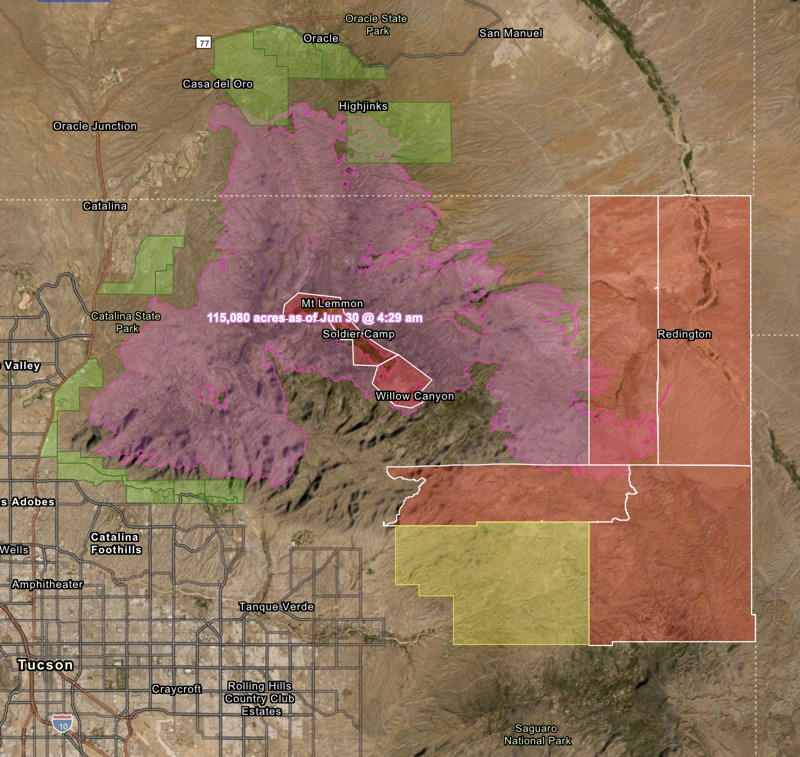
Winds came up mid-morning and a few cumulus clouds (small) appeared. At times during the day I saw firefighting jet tankers fly low over Oracle on their way to and from the fire suppression operations on the southeast side of the mountain. I was never able to get outside with my camera in time to get a photo. The evening fire report said 114,991 acres burned with 54% contained. Although there was still some wind, with cloudy nights in the forecast for next several nights I decided to open the observatory.
This is an excellent article: "Here's why the Bighorn Fire got so big: weather, fuel, terrain".
I have begun updating my Bighorn Fire reports 2020 page with fire status shortly after each day's 0700 MST and possibly after the 2000 MST incident updates.
|
Open: Tuesday, 30 June 2020, 2048 MST Temperature: 81°F |
Session: 1493 Conditions: Clear, breezy, slight smoke smell |
Equipment:
12" f/8 LX600 w/StarLock
2" 24mm UWA eyepiece
Camera:
D850 DSLR
2053 MST: LX600 ON, StarLock OFF, High Precision OFF.
Slewed to M85 (galaxy). Viewed the galaxy but Supernova 2020nlb, Mag. +13.9, was not visible, 102X. SYNCed on the galaxy. Nearby waxing gibbous Moon made the sky pretty bright.
Mounted the D850 DSLR at prime focus, focused on Denebola, locked the 12" primary mirror. Slewed to M85.
2110 MST: StarLock ON.
Did several StarLock autoguided exposures, but seeing was not very good and long exposures overexposed due to the Moon. This is a 2 minutes, ISO 6400, exposure showing Supernova 2020nlb.
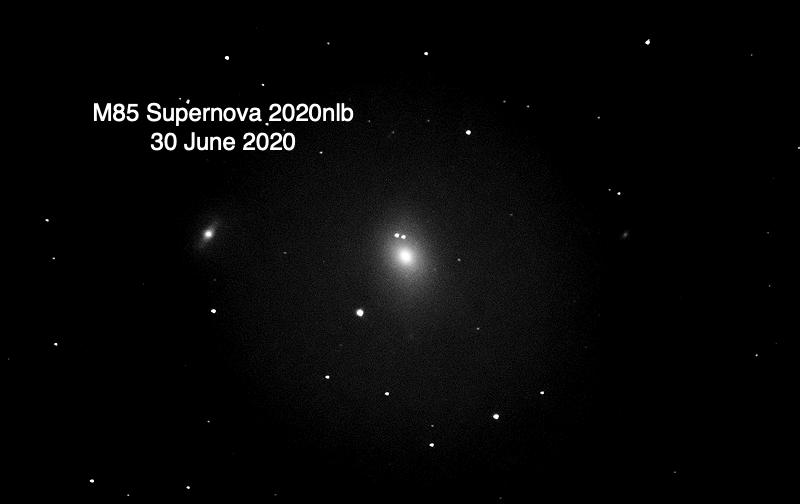
Mouseover or tap on image for pointer to Supernova
2130 MST: StarLock OFF.
Slewed to the waxing gibbous Moon and took this 1/250sec, ISO 100, exposure.
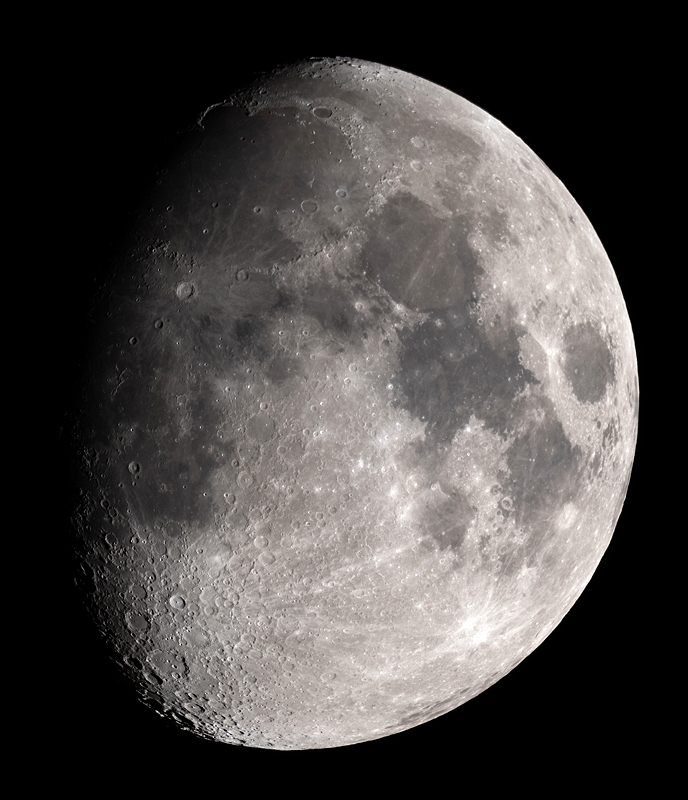
2138 MST: ended imaging. Took a quick look at the Moon, 102X.
2144 MST: LX600 OFF.
|
Close: Tuesday, 30 June 2020, 2155 MST Temperature: 75°F |
Session Length: 1h 07m Conditions: Clear, breezy, faint smoke smell |
Comments are welcome using Email. Twitter users can use the button below to tweet this report to their followers. Thanks.
Cassiopeia Observatory Home Page
Copyright ©2020 Michael L. Weasner / mweasner@me.com
URL = http://www.weasner.com/co/Reports/2020/06/30/index.html
